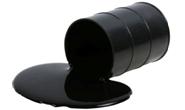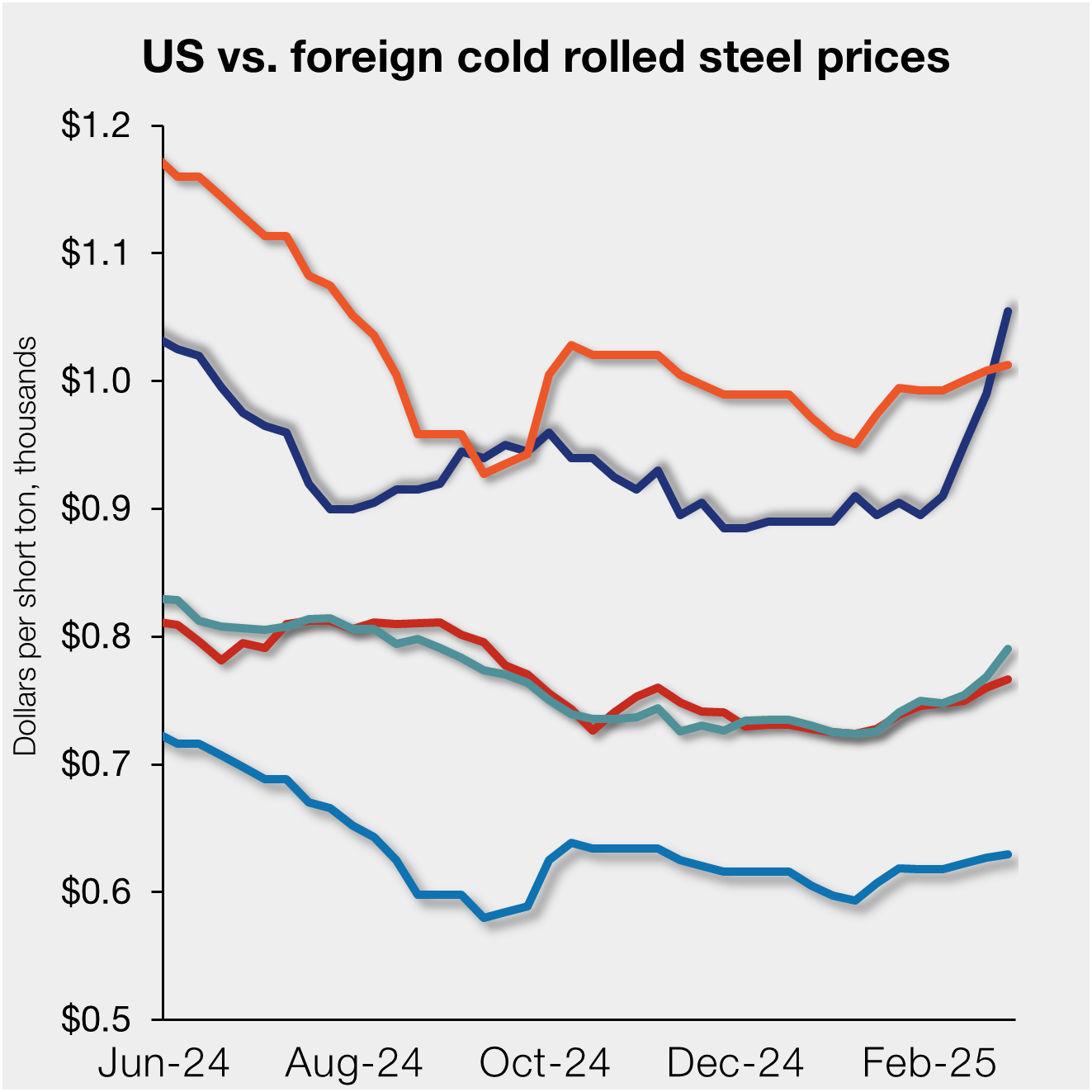Steel Products Prices North America

Why Are Korean OCTG Producers Playing Russian Roulette?
Written by Peter Brebach
June 12, 2014
The following article was written by Peter Brebach, CEO of Iron Angels of Colorado. Peter is a trader who imports pipe and tube products into the United States and is well versed on the current oil country tubular goods (OCTG) issues facing the domestic steel mills. Here is his article on the subject:
Import licenses point to over 400000 tons of Korean OCTG to arrive at US shores during the month of May. I suspect this to be an all-time high, and something that will raise more than a couple of eyebrows. With the final determination of the trade cases against OCTG exported from Korea (and others) scheduled for the month of July, that makes this particularly peculiar. I have been asked to address this subject, and I will start this by answering a number of specific questions I was given.
1.) Why are the Koreans shipping so much OCTG tonnage, especially under the current circumstances?
Frankly, this puzzles me, as it does most people. The vast majority of these imports are run through Korean trading companies or through the US sales offices of Korean producers. While that means that the risk of having to face dumping duties is transferred away from the buyers, it does not make them go away. The “bite date” is already behind us, the date after which any imports might be subject to these additional duties, anti-dumping and / or countervailing.
The Korean mills sailed through the preliminary determination with a big fat zero margin. However, as we have seen in the case of Turkey, that is no guarantee they will remain unscathed through the second round as well. For the record, the Turkish mills were hit with a countervailing duty of around 25%, because they buy most of their raw material (HR Coil) from mills that are allegedly owned and subsidized by the Turkish government. In my long career, I have never seen anything this convoluted, and I would not rule out a similar outcome for Korea.
If that were the case, the importers (Korean entities, as explained above), would have to pay up. There are a couple of theories as to why they act like they have nothing to worry about. One, they expect their margins will continue to be zero, or, if they go up, they will stay in in a manageable range of 10% or less. To me, that’s like playing Russian roulette. Two, they don’t care (unlikely). Three, they were prepared all along this might happen, but the business they did in the past was profitable enough for them to be able to take such hit. Four, their coil suppliers (mainly Posco) will share the burden, because they need the business as badly as the pipe mills do. This last scenario seems to make the most sense.
2.) Who are the US customers for this material, and why are they not buying domestic material, especially since there has been so much new capacity, either installed or being installed, in the US. Why have the domestic mills not pushed back harder?
The first part of the question is easier to answer – US-based pipe distributors, and possibly some end-users in rare cases. The second part is a bit more complicated.
US producers ask for, and in most cases get, quite a premium in their pricing over what imports cost. To simplify matters a bit, let’s assume the US market consists of 3 layers. The top layer involves fairly complicated steel grades, such as P-110 or higher, and requires so-called premium connections. It is for the most part dominated by the domestic mills. The bottom layer mainly consists of imports, material that comes in as “J-55 plain end”, which is then end-finished in the US and often upgraded to higher grades like N-80 or L-80. These operations are performed at a much lower cost than what the domestic mills charge, for a variety of reasons, which in turn contributes to the gap between domestic and import pricing. The middle layer then really is a mix – some of the better imports participate in it and compete with those domestic mills which are either very hungry for orders and / or are not able to attain (yet) the quality level which would allow them to play in the top league.
Now the annual consumption of OCTG in the US market runs between 6 and 7 million tons, approximately half of which is covered by imports. Old domestic capacity is approx. 6 million tons, and the new mills will add approx. 4 million tons to that. So, even in the best case scenario – imports staying where they are, for which there is no guarantee – roughly 10 million tons of domestic capacity will fight for 3 to 3.5 million tons not covered by imports. It should be obvious that the situation in layer 2 is cut throat, which might spill over into layers 1 and 3.
Obviously, if the Koreans are able to stay in the market, it does not take a genius to prophecy a bloodbath.
3.) Are the Koreans that much cheaper than the Turks (or others)?
First, some of them are. Second, Korean pipe has a higher acceptability rate in the market than Turkish – not necessarily because their quality is better, but mainly because they have been around much longer. Third, the Turkish mills are facing 25% countervailing duty. In this context, it also needs to be noted that most of the Vietnamese and Indian mills and all of the Philippine and Thai producers have been taken out of the game because of the substantial preliminary margins they received.
As an interesting side note, Mario Longhi, the CEO of US Steel, claimed during a speech in W. Virginia that the outcome of these trade cases is important for the coal mines in that state, because coal is used in the production of steel, including OCTG. While this is technically correct, it’s a bit of a stretch in my book. First, a lot of the coil that goes into the production of OCTG is made by scrap-based Electric Furnace producers. Second, they are many other places in the US that produce coal, and third, coal has a big target on its back at present. It has to compete with domestically produced oil and gas (which is where practically ALL of the OCTG is going), and moreover, coal simply has become a problem environmentally. Gas in the $ 4.00 per million BTU range is cheaper, and, more importantly, it produces about half the pollution that a comparable amount of coal does.
Peter Brebach
Peter Brebach
Read more from Peter BrebachLatest in Steel Products Prices North America

Nucor slows HRC price climb with $5/ton increase
After eight weeks of double-digit price increases on hot-rolled (HR) coil, Nucor slowed the price rise this week with an increase of $5 per short ton.

Domestic CRC prices surge ahead of imports
The price spread between stateside-produced CR and imports reached its widest margin in over a year.

Evraz raises plate prices $160/ton
Evraz North America (NA) has followed Nucor and SSAB with a plate price increase of its own: up $160 per short ton (st). The increase was effective immediately for all new orders of carbon, high-strength low-alloy, and normalized and quenched-and-tempered plate products, as well as for hot-rolled coil, the steelmaker said in a letter to […]

Nucor lifts HR coil to $820/ton
Nucor has increased its consumer spot price (CSP) for hot-rolled (HR) coil for a fourth consecutive week.

Nucor pushes HR spot price to $790/ton
Nucor increased its consumer spot price (CSP) for hot-rolled (HR) coil to $790 per short ton (st) on Monday, Feb. 10 – a $15/st bump vs. last week. The Charlotte, N.C.-based company has raised its weekly CSP by $40/st over the past three weeks after maintaining tags at $750/st since Nov. 12, according to SMU’s […]
